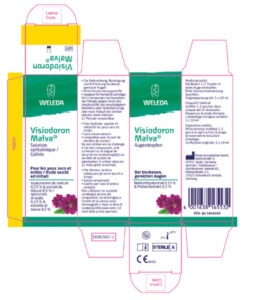The Weleda Story
With great courage and commitment, the founders of Weleda dared to break new ground 100 years ago. They recognized the deep connection between people and nature. Weleda has been developing natural cosmetics and anthroposophic medicine since 1921. They strive to make the world a better place: from their biodynamic medicinal plant gardens, sustainable and respectful supply chains, and emphasis on responsible use of resources. The importance of sustainability, people, and nature are part of Weleda’s roots and their foundation for the future.
Weleda believes nature offers the best solutions to every beauty and wellness need. Their cosmetic products are all certified to NATRUE, fulfilling the strict criteria of the standard for raw materials and manufacturing. Weleda uses flower, fruit and root extracts, minerals, and essential oils, each one carefully selected and orchestrated to work with the body’s own systems.
Weleda in Today’s Marketplace
There is no legal framework defining what it means for cosmetics to be natural. As Simone Luntzer, International Packaging Management Team Leader, Pharmaceuticals, said, “This is why Weleda, as a founding member of the NATRUE natural cosmetics label, is strongly committed to clear rules and en- forcing a high level of transparency. Many companies are now moving in the direction of natural cosmetics, but certification according to recognized labels such as NATRUE is not required. There is a lot of advertising about naturalness, and as a consumer you have to be very well informed to understand how high the degree of naturalness is.”
As the world’s leading manufacturer of certified natural cosmetics and anthroposophic medicines, Weleda set standards for raw material sourcing: over 80% of their botanical raw materials come from organic or biodynamic cultivation.
Challenges with Packaging Content and Creative Design
Weleda had various processes and content they needed to organize and manage. As Simone noted, their challenges were many, including: managing a large volume of texts, a wide variety of dosage forms, the varying regulatory requirements of many countries, template diversity, drug approval requirements, the GMP-relevant release processes, and the archiving and traceability of changes.
Additionally, Weleda manages many SKUs and needs different processes depending on the type of packaging materials produced.
Workflow Magic with Esko WebCenter
Weleda’s main goal when choosing a software solution was the ability to control their processes and manage packaging content in an efficient way. It was clear they needed a modern, configurable system that could be flexibly adapted to Weleda’s requirements. They implemented WebCenter, a workflow man- agement tool focusing on all aspects of packaging artwork: shape, brand colors, and content. It man- ages packaging artwork specifications, approvals, and project life cycle. WebCenter integrates with interactive artwork inspection tools to drive quality control in an end-to-end platform.
Content Management, a module of WebCenter, helps Weleda specify, manage, and reuse content like text, claims, symbols, barcodes, and other content for use on packaging artwork, labels, leaflets, IFUs (Instructions for Use), and more. Content Management also enables users to manage and structure content without the need to manually copy and paste content from spreadsheets, doc- uments, and other sources. Teams can reuse approved content both in the artwork and for regulatory bodies through WebCenter in submission-ready file formats.
When Weleda first started using WebCenter, they were pleased that there was no programming required, and the system acted as a data source for applications that went beyond packaging production, such as, text modules for drug lists and data export for online applications. Additionally, Weleda placed great importance on choosing a validated solution with a user-friendly interface.
For us, the traceability of changes is very important. That is why we appreciate the WebCenter workflow solution.
Weleda quickly saw the benefits of WebCenter, Simone Luntzer noted, stating, “the system provides a good overview of ongoing and completed tasks. We use the statistics and libraries, which give us quick access to our data.” The packaging content manage- ment tool enables Weleda to use the texts from the central library, which contributes to efficiency by enabling the reuse of standard texts.
When asked why Weleda decided to use Esko, they responded that it was clear from the beginning that Esko understood their needs, would fulfill their requirements, and grow with them. In the final analysis, with WebCenter, everything is cohesive and streamlined.
Esko WebCenter already offers a very good solution in the standard version, which makes customizing superfluous. Release capability is ensured. As a leader in the industry, Esko will invest in the proper development of the system. We will also benefit from this.



